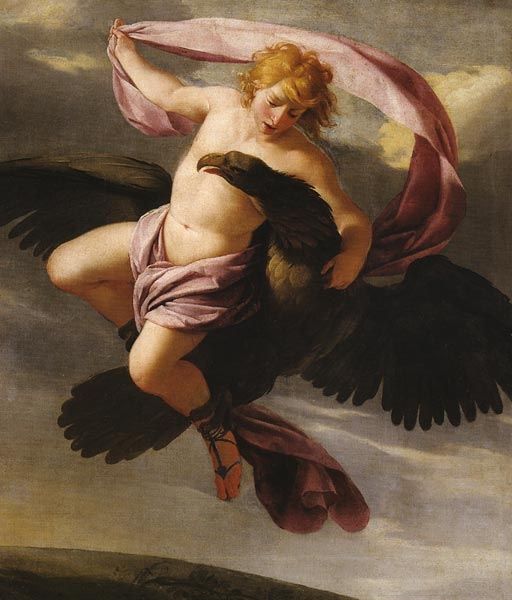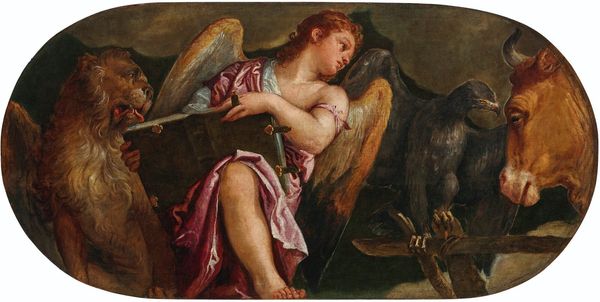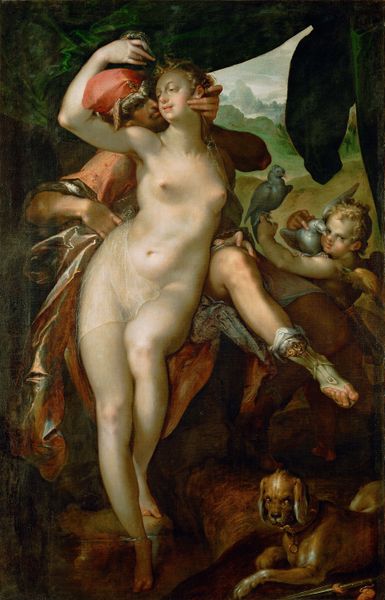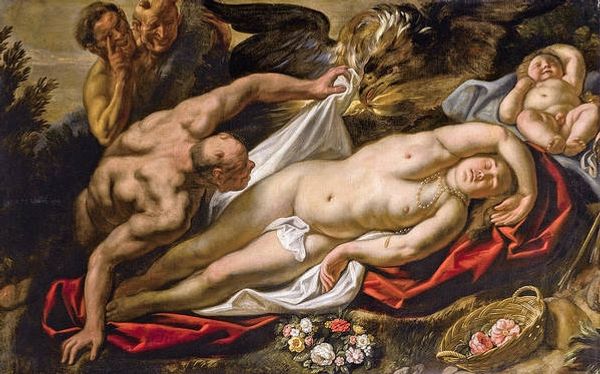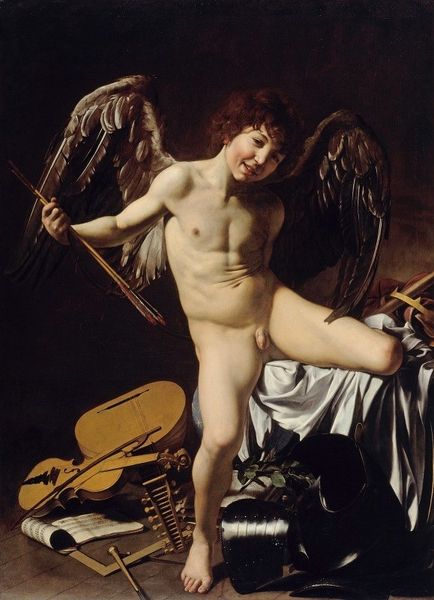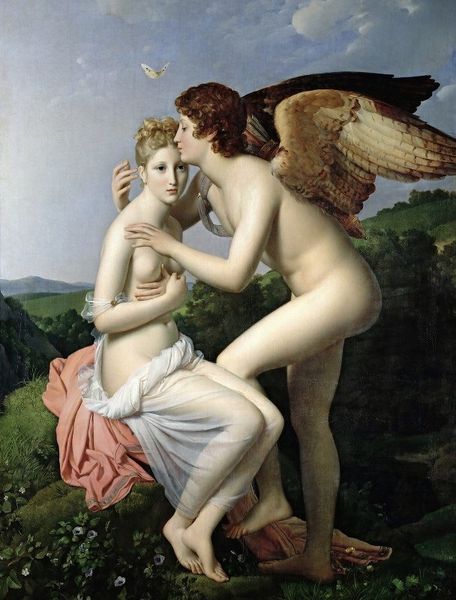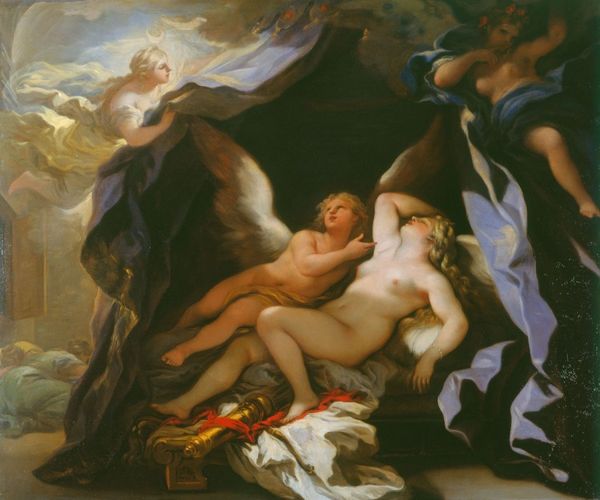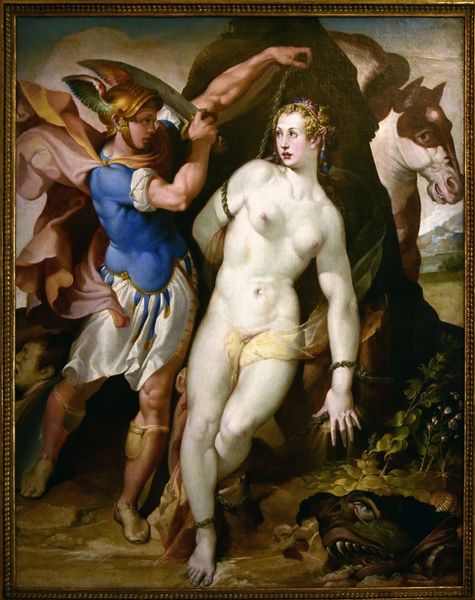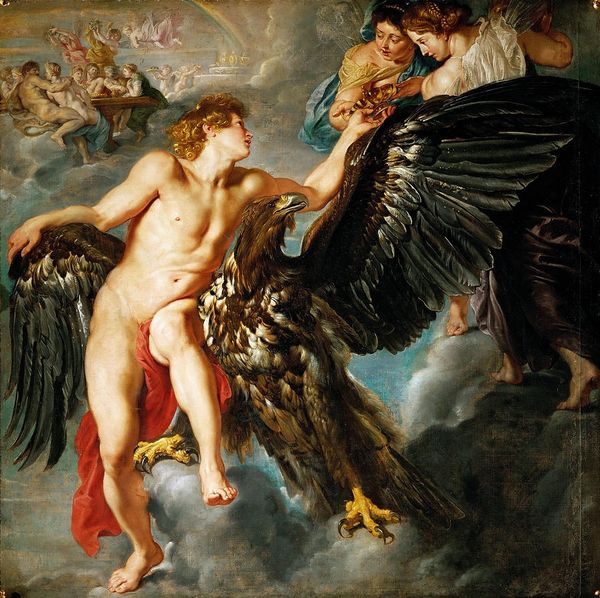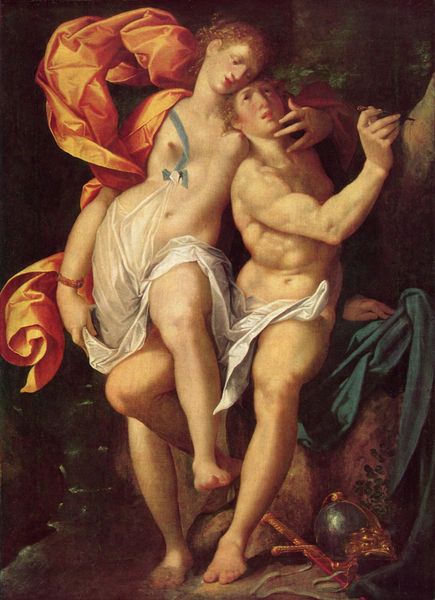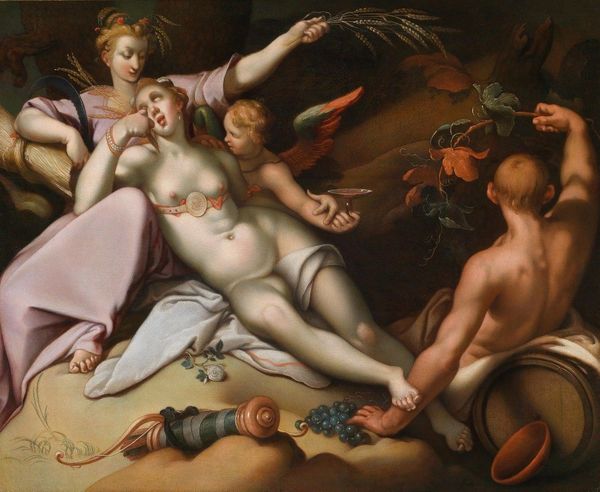
painting, oil-paint
#
venetian-painting
#
allegory
#
painting
#
oil-paint
#
landscape
#
mannerism
#
oil painting
#
roman-mythology
#
cupid
#
mythology
#
history-painting
#
italian-renaissance
#
nude
#
erotic-art
Copyright: Public domain
Paolo Veronese painted "Leda and the Swan" sometime in the 16th century. The painting presents us with a scene of soft forms and intimate interaction, dominated by a palette of creamy whites, fleshy pinks, and rich burgundies. The composition pivots around the stark contrast between Leda's reclining form and the swan, Zeus in disguise. The lines of their bodies create a visual rhythm, leading the eye across the canvas. There is a tension between the classical subject matter and the sensuous treatment of texture and color. Veronese destabilizes the traditional heroic narrative, focusing instead on the immediate, physical encounter. This move shifts the viewer's focus from the divine implications to the human experience, challenging the established values of mythological painting. By engaging with the semiotics of desire, Veronese turns the myth into a discourse on beauty and power. Ultimately, the painting's enduring appeal lies in its ability to provoke ongoing interpretation, inviting viewers to engage with its complex interplay of form and meaning.
Comments
No comments
Be the first to comment and join the conversation on the ultimate creative platform.
